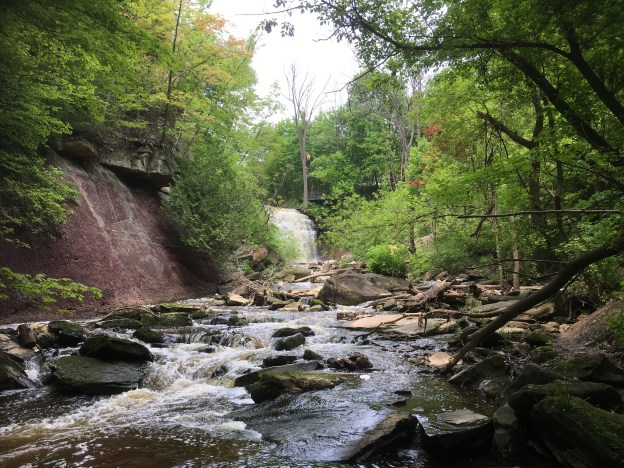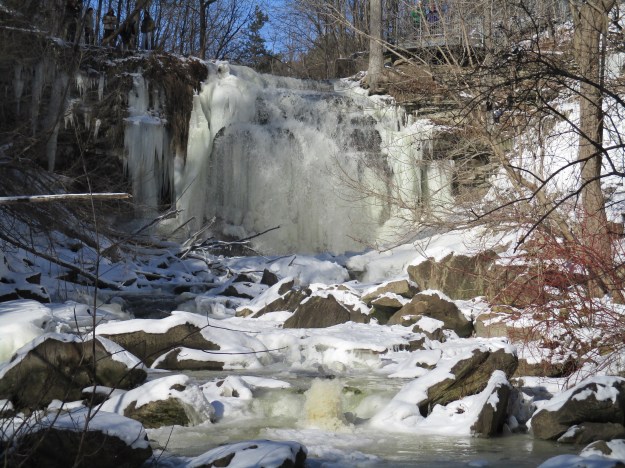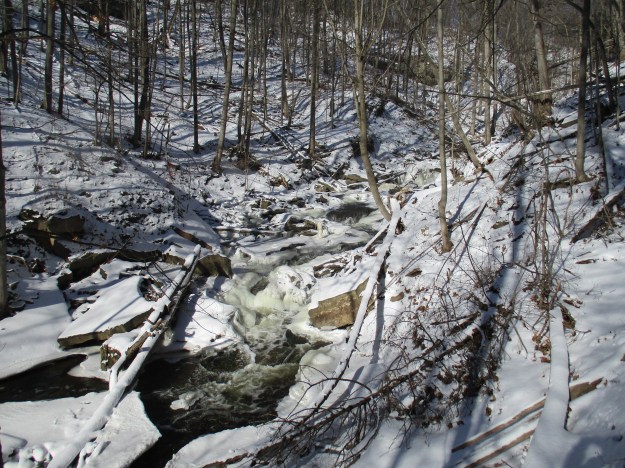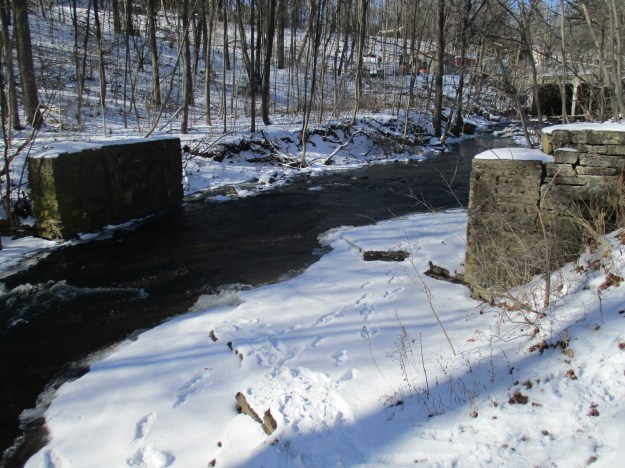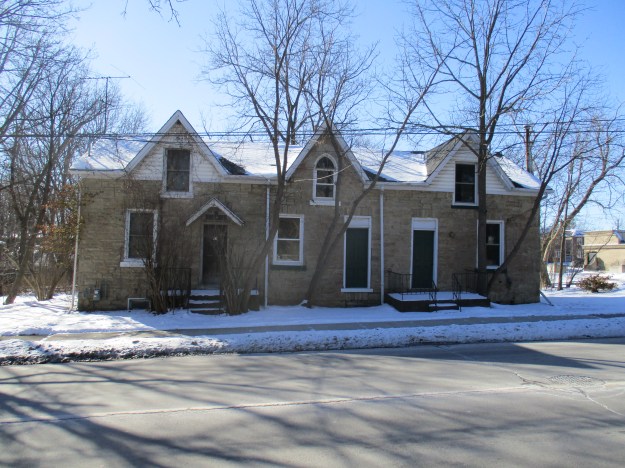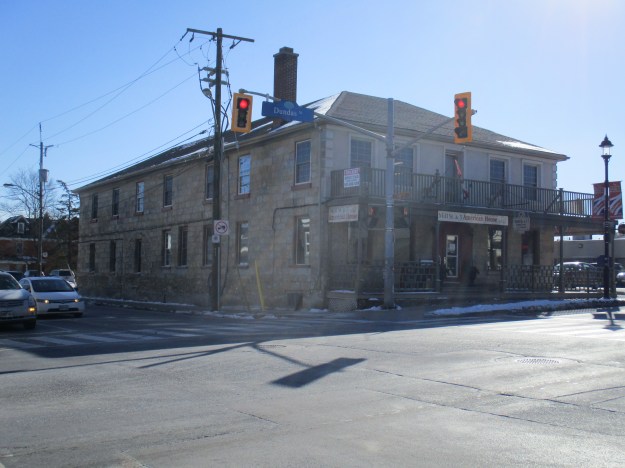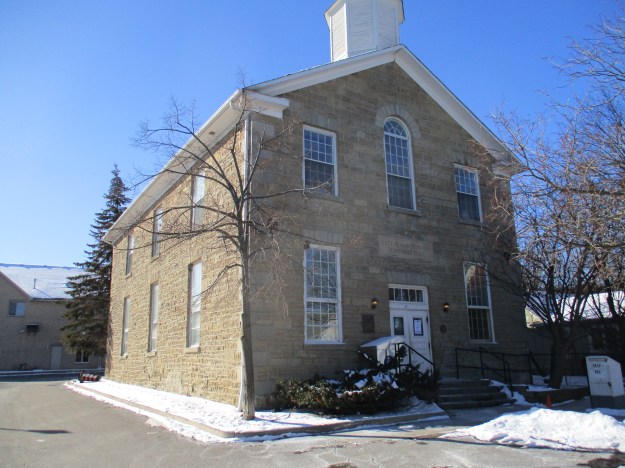Saturday, June 1, 2019
We had previously visited the falls in Waterdown in the winter and decided to return to see what the summer was like on the local trails. There is free parking right beside the waterfalls which have gone by several names over the years including The Great Falls, and Grindstone Falls. Our earlier story featured slackliners walking across the gorge above the falls and we called it Slacking in Smokey Hollow. We followed Grindstone Creek downstream until we came to the Norman Pearson Side Trail. This connects to the McNally Side Trail and returns you to the main trail. There is an additional little side trail called the Upper Grindstone Side Trail that was part of the package.
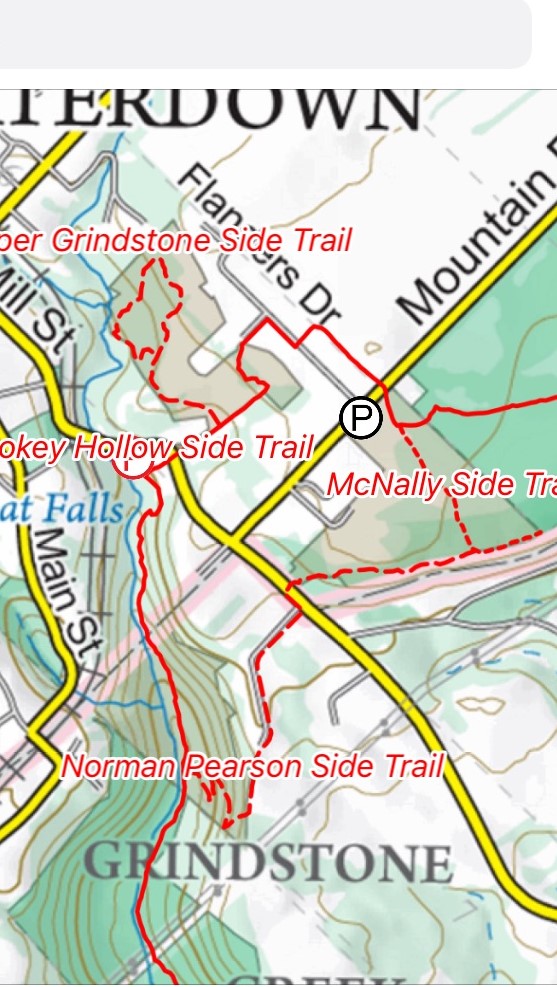
The Smokey Hollow Side Trail is only 50 metres long and connects the main trail to a viewing platform for Grindstone Falls. The platform can be seen in the picture below and it provides an interesting view of the crest of the falls. The Bruce Trail follows Grindstone Creek and has a set of stairs built into the side of the ravine to allow easier descent. From the bottom a short trail leads back toward the bottom of the falls but be careful, we witnessed a guy showing off for his girlfriend who fell into the creek and got completely soaked. If he would have been injured he’d have required a complicated rescue.
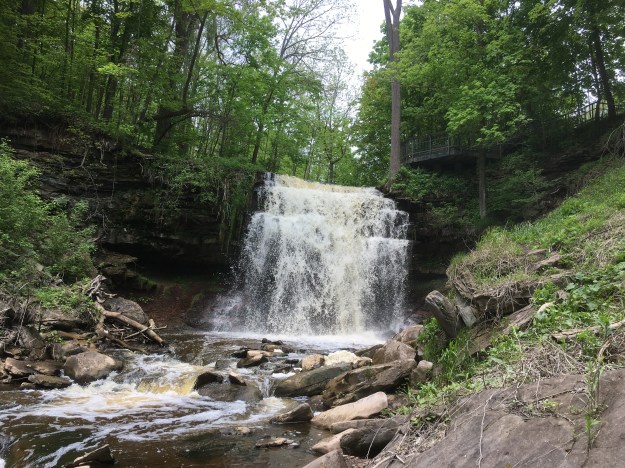
From there we followed the main trail along side Grindstone Creek. This trail gives plenty of great views of the creek as it cascades over the large chunks of dolomite that have been eroded over the past 12,000 years since the last ice age retreated.
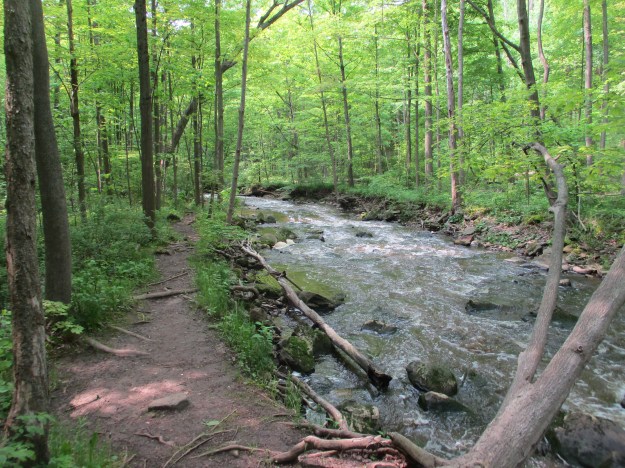
When you reach more level ground you can depart from the main trail onto the Norman Pearson Side Trail. This 1.4 kilometre blue trail will bring you out to Waterdown Road where you can connect with the McNally Side Trail. Both of these side trails are marked with blue blazes on the trees. There’s also a couple of places where the trail is ablaze with blue from forget-me-nots.
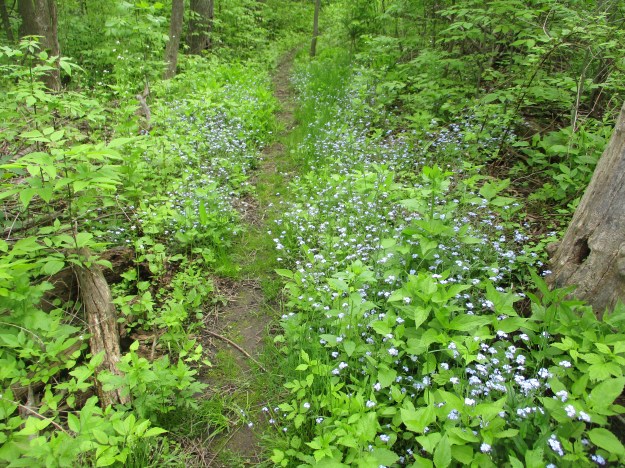
Lily of the valley is a highly poisonous plant that is native to Asia and Europe and has been introduced to North America as a garden plant. It does well and can grow into large clusters under the right conditions. The scent of the flower has been imitated for perfume and Kate Middleton carried lily of the valley in her bridal bouquet when she married Prince William.

The Mayapples are finally in bloom with a single flower on each fertile plant. These flowers will close up in a few days and begin to develop into the fruit. The fruit will turn yellow when it ripens later in the summer.
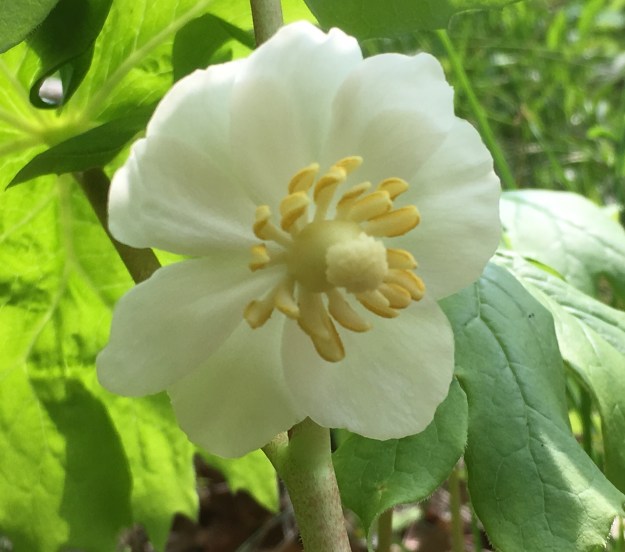
Near Waterdown there is a Bitternut Hickory tree that is estimated to be 128 years old and has a lifespan of 200 years. It produces a large amount of very bitter tasting nuts that even the squirrels will only eat during food shortages. There are 16 Bruce Trail heritage trees that have been identified along the route. Their GPS locations can be found at this link.
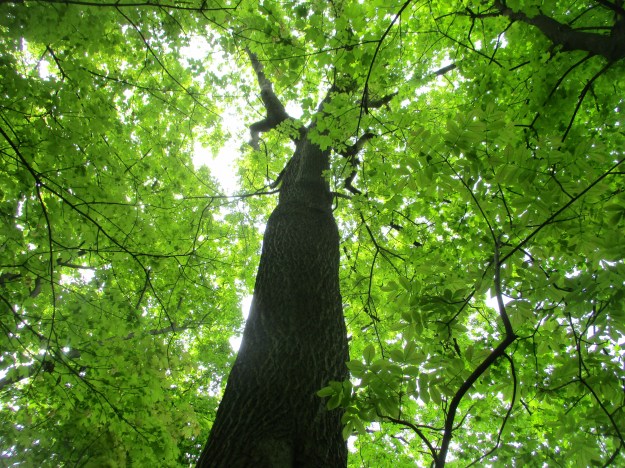
The properties that the trail runs through are mostly private farms and access is allowed by the good graces of the land owner. Some of the land grants were poor farming land and have been allowed to return to forest. Other areas are still operated as family farms, some of them into the fourth and fifth generations. Many of these farmers still have old farm implements from their father or grandfather. Somehow the seat on the old plow below doesn’t look very comfortable nor do the steel studded wheels look like they absorb much shock.
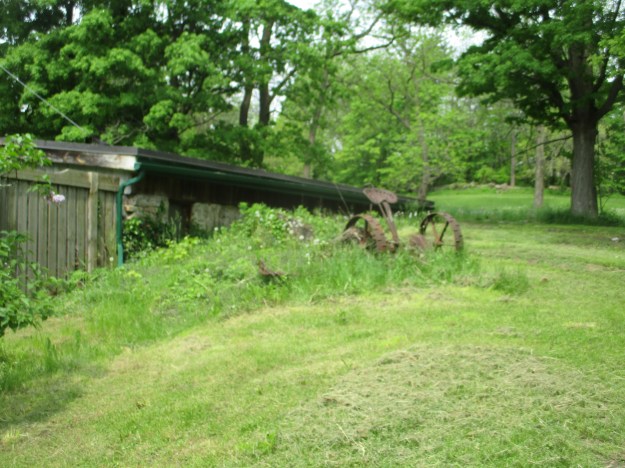
The McNally Side Trail is only 0.48 kilometres long and brings you back to the main trail above Waterdown. The Upper Grindstone Side Trail follows a lightly used path through a grassy field and back into the forest. When you come to the little loop you can go left and down to the creek or you can go to the right and climb higher onto the ridge before descending to creek level. It will then return you to the main trail very near to the parking lot. Evidence of a former dam at the top of the falls is a reminder of the industrial past of this site. Hidden among the trees on both sides of the creek are other traces of previous buildings, just waiting to be discovered and explored.
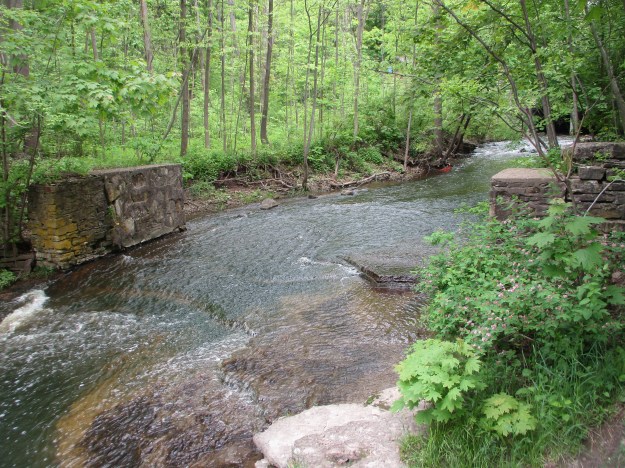
This set of side trails along with the accompanying main trail make for an interesting loop which has the equivalent of 41 flights of stairs as it goes up and down the sides of the ravine.
Google Maps Link: Great Falls Smokey Hollow
Check out the top 20, reader selected stories from our first five years: Back Tracks: 5 Years of Trails.
Like us at http://www.facebook.com/hikingthegta
Follow us at http://www.hikingthegta.com
